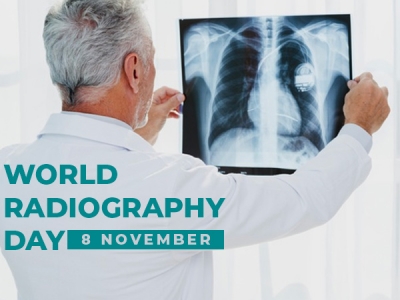
November 8 is X-ray Day. X-rays were discovered in 1895 by German physicist Wilhelm Conrad Röntgen, who received the first Nobel Prize for physics in 1901, yet never tried to patent his discovery.
The X-Ray was discovered by accident, as part of an experiment, where Wilhelm was attempting to ascertain whether or cathode rays could pass through glass. Nearby there was a chemically coated screen, and from it was emanating an odd glow, and dubbed the rays causing that glow X-Rays. Why you ask? Because he didn’t know what they were, so the ubiquitous ‘X for unknown’ was utilized. They’ve been called X-Rays ever since.
So what are x-rays really? They’re energy waves of electromagnetism that act in much the same way light rays do, but with an incredibly short wavelength. 1,000 times shorter than those of light to be precise. Once he discovered them, he began experimenting extensively with them, determining what they could and couldn’t pass through, and how they could be photographed. It was through this that he discovered that lead absorbed it almost completely, and human bone would stop it, creating a new and innovative way to see what was going on inside the human body.
X-Rays were used extensively during the Balkan War to locate shrapnel, bullets, and broken bones in soldiers in the field. X-Rays were used extensively in things like shoe-fittings until it became apparent that it wasn’t all fun and games. Now they’re used for things like security at airports, material analysis, and more, but with much more attention to safety.
The best way to celebrate World Radiography Day is to research X-Rays and what they’ve done for us. Then you can sit down and try to think of all the different ways that x-rays are used in modern living.
Credit : Days of the year
Picture Credit : Google




